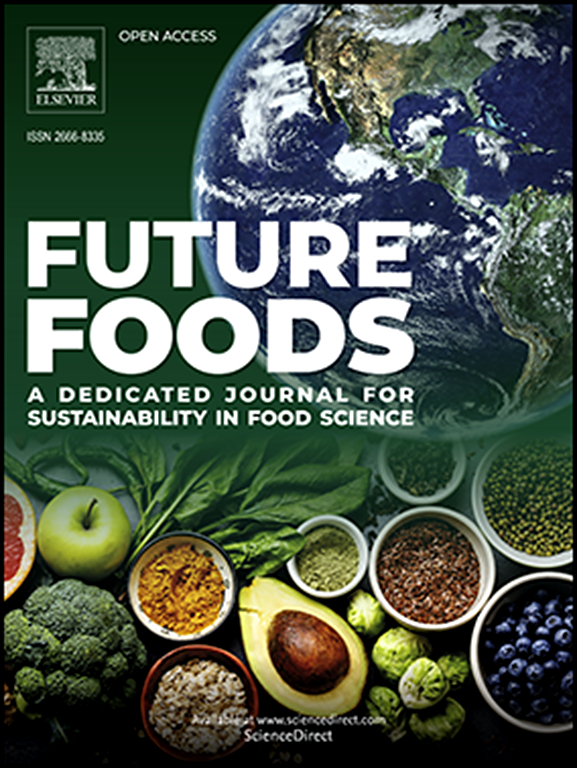Valorizing agricultural waste: Utilizing corn plant leftover to grow yeast biomass, as a potential source of sustainable protein
IF 7.2
Q1 FOOD SCIENCE & TECHNOLOGY
引用次数: 0
Abstract
Rising concerns about sustainability, food security, human health, and animal welfare, drive the shift to sustainable protein alternatives. We studied upcycling post-harvest leftover corn leaves and stalks to grow yeast. Yeast biomass is a great source of proteins and other nutrients, useful for developing protein-rich alternatives for animal-based products. After harvest, we shredded the plant, dried it, then chemically and enzymatically hydrolyzed cellulose and hemicellulose, and obtained ∼3.5 % sugar in the substrate. Next, we used the substrate to grow biomass of a GRAS yeast strain, Yarrowia lipolytica, capable of utilizing also pentoses from hemicellulose, and obtained ∼1 gram of yeast biomass using 15∼ grams (dry mass) of corn waste. The yeast was separated from the substrate, freeze dried and analyzed for composition. The combination of acid-then-enzymatic pretreatment to the shredded corn plant biomass resulted in the highest yeast protein yield per dry corn plant biomass (28 g/kg), compared to hot water (1.8 g/kg), acid (9.7 g/kg), or enzymes (8.6 g/kg) pretreatments. While further optimization would be required to facilitate practical application, the process shows promise of converting agricultural waste into an alternative source for novel food proteins. In the future, when available land and water resources become scarce and expensive, animal agriculture inevitably diminished, and resource utilization and waste valorization become imperative, the process presented here is likely to become economically and environmentally rewarding.

求助全文
约1分钟内获得全文
求助全文
来源期刊

Future Foods
Agricultural and Biological Sciences-Food Science
CiteScore
8.60
自引率
0.00%
发文量
97
审稿时长
15 weeks
期刊介绍:
Future Foods is a specialized journal that is dedicated to tackling the challenges posed by climate change and the need for sustainability in the realm of food production. The journal recognizes the imperative to transform current food manufacturing and consumption practices to meet the dietary needs of a burgeoning global population while simultaneously curbing environmental degradation.
The mission of Future Foods is to disseminate research that aligns with the goal of fostering the development of innovative technologies and alternative food sources to establish more sustainable food systems. The journal is committed to publishing high-quality, peer-reviewed articles that contribute to the advancement of sustainable food practices.
Abstracting and indexing:
Scopus
Directory of Open Access Journals (DOAJ)
Emerging Sources Citation Index (ESCI)
SCImago Journal Rank (SJR)
SNIP
 求助内容:
求助内容: 应助结果提醒方式:
应助结果提醒方式:


